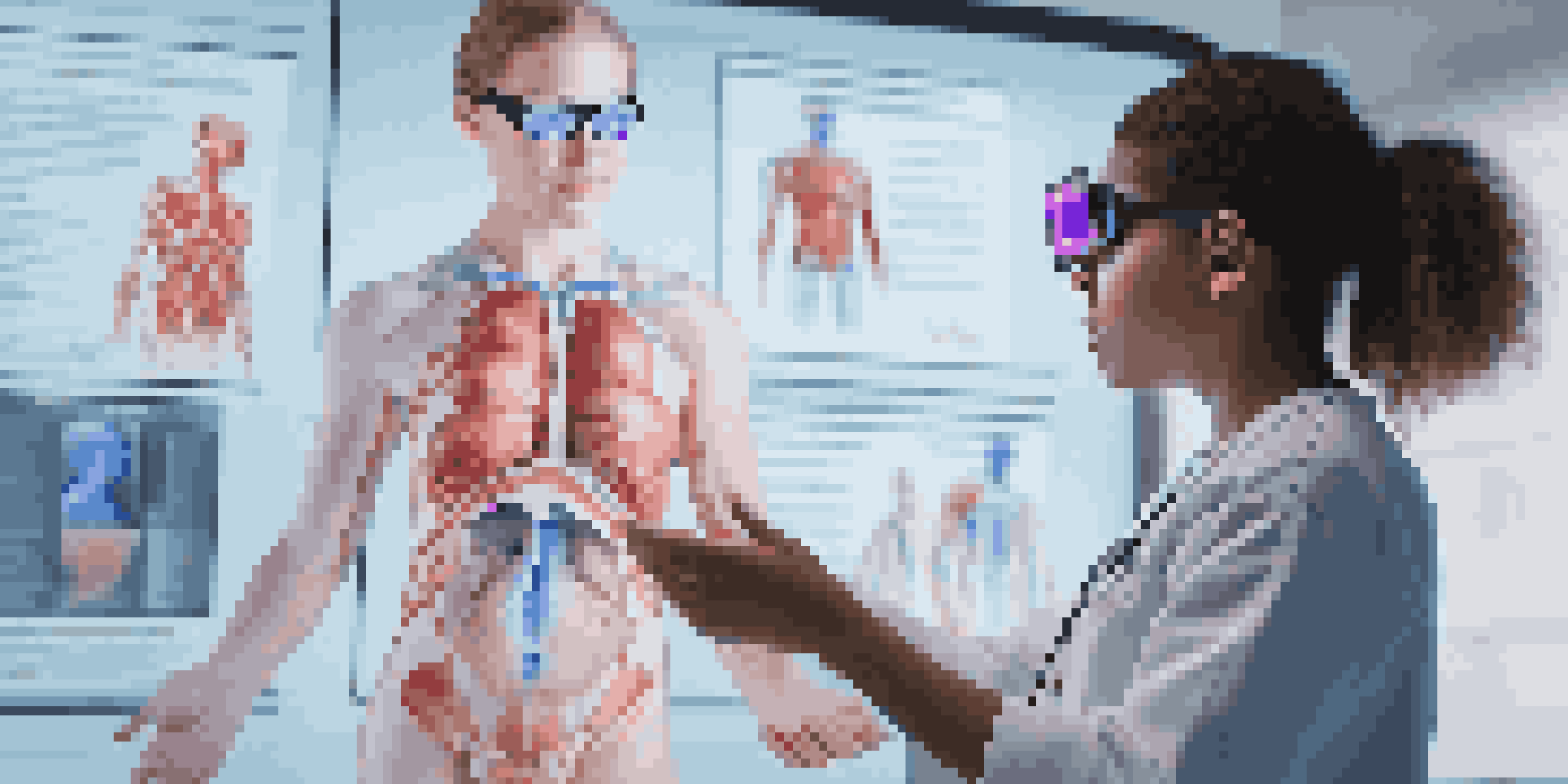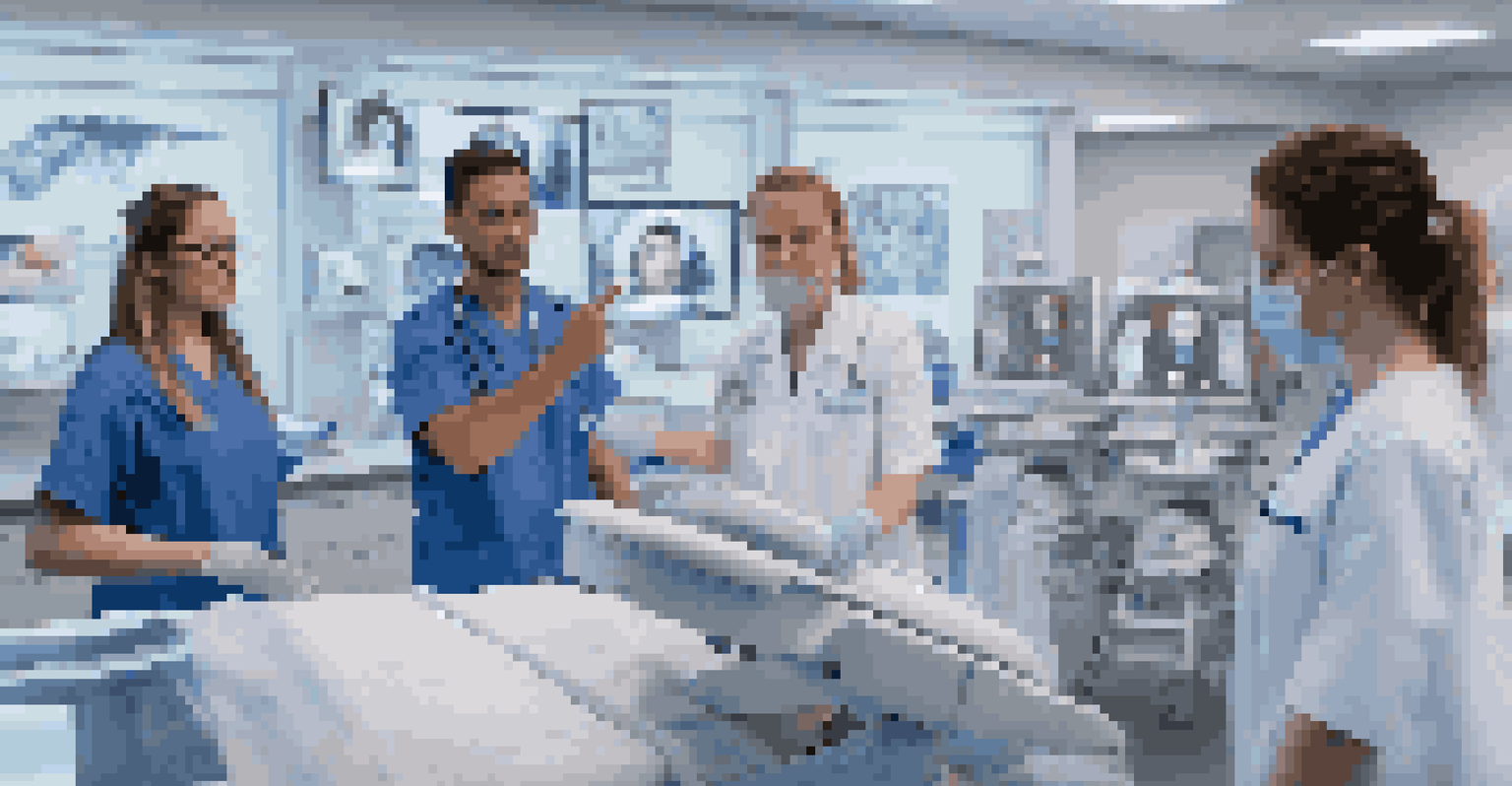AR in Nursing Education: Enhancing Clinical Training

Introduction to Augmented Reality in Nursing Education
Augmented reality (AR) is revolutionizing various fields, and nursing education is no exception. By overlaying digital information onto the real world, AR offers nursing students immersive learning experiences that traditional methods can't match. This technology not only engages students but also enhances their understanding of complex medical concepts.
Augmented reality will change the way we learn and teach, allowing for immersive experiences that were previously unimaginable.
Imagine being able to visualize the human anatomy in 3D while interacting with it in real time. This level of engagement fosters a deeper comprehension of how different systems work together, making the learning process not just informative, but also exciting. It's like having a virtual anatomy lab right at your fingertips.
As nursing education evolves, incorporating AR into curricula prepares future nurses for a tech-savvy healthcare environment. By blending theoretical knowledge with practical applications, AR ensures that students are better equipped for clinical settings.
Benefits of AR in Clinical Skills Training
One of the most significant advantages of AR in nursing education is its ability to enhance clinical skills training. Students can practice procedures in a safe environment without the pressure of real-life consequences. For instance, using AR, a student could simulate inserting an IV or performing CPR, receiving immediate feedback on their technique.

This hands-on experience fosters confidence, allowing students to refine their skills before interacting with actual patients. Just like a pilot uses a flight simulator to hone their skills, nursing students can use AR to master essential procedures. This approach not only boosts competence but also reduces anxiety about performing in high-stakes situations.
AR Enhances Nursing Skills Training
Augmented reality provides nursing students with a safe environment to practice clinical skills, boosting their confidence and competence.
Moreover, AR can cater to various learning styles, from visual to kinesthetic, ensuring that all students benefit from this innovative training method. By providing diverse ways to engage with the material, AR helps create well-rounded healthcare professionals.
Improving Patient Assessment Skills with AR
AR technology can also play a pivotal role in enhancing students' patient assessment skills. By creating realistic patient scenarios, nursing students can practice vital assessment techniques, such as taking vital signs or conducting a physical examination. This immersive experience allows learners to hone their observational skills in a controlled setting.
The integration of technology in healthcare education is not just an enhancement; it's a necessity for preparing future professionals.
For example, an AR simulation could present a patient with various symptoms, challenging students to identify and prioritize what to assess first. This kind of practice not only sharpens critical thinking but also prepares students for the unpredictability of real-life clinical environments. It's akin to solving a puzzle where each piece is a vital sign or symptom.
As they navigate these scenarios, students receive instant feedback on their decision-making processes, which helps them learn from their mistakes in real time. This interactive learning method encourages a proactive approach to patient care, ultimately benefiting future patients.
Fostering Collaborative Learning through AR
Collaboration is an essential skill in nursing, and AR can enhance this aspect of education by promoting teamwork among students. Through shared AR experiences, nursing students can work together to solve clinical cases or practice procedures, just as they would in a real healthcare setting. This collaborative approach helps build communication skills and teamwork.
Imagine a group of students gathered around a virtual patient, discussing the best course of action while interacting with the AR interface. This scenario mirrors real-life situations where nurses must rely on one another to provide optimal patient care. It creates a sense of camaraderie and prepares students for the collaborative nature of the healthcare field.
Improves Patient Assessment Skills
AR technology allows nursing students to engage in realistic patient scenarios, enhancing their critical thinking and observational skills.
Additionally, these shared experiences can foster peer-to-peer learning, where students can teach and learn from each other. This not only reinforces their own understanding but also builds confidence in their ability to work as part of a healthcare team.
Challenges and Considerations for Implementing AR
While AR offers numerous benefits, there are challenges in implementing this technology in nursing education. One primary concern is the cost of AR tools and training. Educational institutions must consider whether they have the budget to invest in AR technology and the necessary infrastructure to support it.
Moreover, instructors may require training to effectively integrate AR into their teaching methods. It’s crucial that educators are not only comfortable with the technology but also adept at using it to enhance learning outcomes. This transition can be daunting for some, but it’s essential for maximizing the benefits of AR.
Lastly, there’s the question of accessibility. Institutions must ensure that all students have equal access to AR resources, regardless of their background or financial situation. Addressing these challenges is vital for a successful implementation of AR in nursing education.
Future Trends of AR in Nursing Education
The future of AR in nursing education looks promising, with continuous advancements in technology paving the way for even more innovative applications. As AR becomes more accessible and affordable, we can expect to see it integrated into nursing curricula across the globe. This could lead to a standardization of AR training in nursing programs, making it a crucial component of education.
We may also see the development of more sophisticated simulations, incorporating artificial intelligence to create dynamic patient scenarios that adapt to students' actions. This level of interactivity could revolutionize how students approach clinical training, providing a more realistic and engaging learning experience.
Promotes Collaborative Learning
Through shared AR experiences, nursing students develop teamwork and communication skills essential for effective patient care.
Ultimately, the integration of AR technology in nursing education aims to enhance the quality of healthcare by better preparing future nurses. As they become more skilled and confident through these advanced training methods, the impact on patient care will be significant.
Conclusion: The Transformative Impact of AR on Nursing Education
In conclusion, augmented reality is transforming nursing education by providing students with hands-on, immersive learning experiences. From enhancing clinical skills to fostering collaboration among peers, AR offers a plethora of benefits that traditional methods struggle to match. As we navigate the challenges of implementation, it’s clear that the advantages far outweigh the hurdles.
By integrating AR into nursing curricula, educational institutions can better prepare students for the challenges they will face in real-world clinical settings. This technology not only boosts confidence and competence but also cultivates a new generation of nurses who are well-versed in modern healthcare practices.

As we look to the future, the potential for AR in nursing education is vast. Embracing this technology will pave the way for improved training methods, ultimately enhancing patient care and outcomes in the healthcare system.